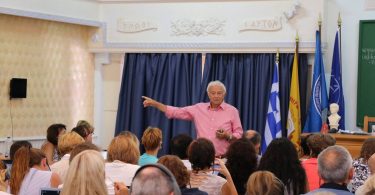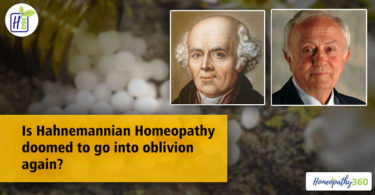
Introduction
A follower of Ram Mohun Roy ideology, Dr. Mahendra Lal Sircar was a man of next generation science promoter in colonial India. He sowed the seeds of modern science and new research in 19th century India which bore its fruits by producing scientists like Jagdish Chandra Bose, Prafulla Chandra Roy and Sir C. V. Raman in 20th century. All these scientists had their roots somehow connected to Indian Association for the Cultivation of Science which was founded by Dr. Mahendra Lal Sircar in the year 1876. He not only promoted study of science in colonial India but himself took medical degree from Calcutta University and was amongst one of the renowned physicians of Calcutta. His other fields of interests included literature, music, religion, philosophy and history. It is interesting to know how a torch bearer of modern science got interested in Homoeopathy and stood still for it against his own colleagues.
Early life and education
Dr. Mahendra Lal Sircar was born on 2nd November 1833 in village Paikpara of Howrah, West Bengal. He and his brother were brought up by his maternal uncles as they both had lost their parents very early in their life.
Dr. Sircar’s early education started in a Primary School (formerly known as Bangla Pathshala) in his native place Paikpara only. He was introduced to English language by Babu Tarak Kumar Das of Nebutola, Calcutta. Tarak babu, as a teacher greatly influenced Sircar’s life. After completing his primary education, he was admitted to David Hare School and he studied here from 1841 to 1849. After receiving a ‘junior scholarship’ he was promoted for further study to Hindu College. Here he studied natural philosophy, geometry, astronomy, mathematics, and science. With his hard working and appealing personality, Dr. Sircar used to win over his teacher’s heart and hence a little extra attention from them. One such teacher he met here was Mr. Sutcliffe. But Hindu College was not sufficing his quest to learn more in the field of modern science. So, despite Professor Sutcliffe’s objection Mahendra Lal Sircar left Hindu College in 1854 and took admission in Calcutta Medical College (CMC) and started his journey to become Dr. Mahendra Lal Sircar.
Dr. M. L. Sircar and Medical career
Similar to previous institutes, Mahendra Lal Sircar became everyone’s favourite and popular amongst faculty and students. Here he came closer to Dr. Archer, professor at Department of Ophthalmology after an incident where Dr. Archer asked a difficult question to fifth year student where nobody answered and Dr. Sircar answered at one go while just passing from nearby place. After this incident Dr. Sircar started attending Dr. Archer clinic regularly. And subsequently grew more closer to other professors like Eatwell, Goodeve, Wilson, Fryer etc. He started taking classes at CMC on ‘mechanism of eye as an optical instrument’ and even got invitation to give lecture on ‘adaptation of the human eye to distance’ from Bethune Society.
He appeared for L.M.S. exam in 1860 and passed with flying colours. In 1863, he appeared for M.D. examination and secured top honours and became second Indian to earn his M.D. degree from Calcutta University. Dr. Sircar soon became one of the renowned physicians of his time with his practise in Calcutta.
Dr. M. L. Sircar and Homoeopathy
Till all this time Dr. Sircar was very reluctant towards the principle of Homoeopathy and he even criticized homoeopaths as ‘leeches’ who take credit for cures when disease has already run its course. This dispute between allopath and homoeopath was at peak in mid-nineteenth century. It was merely an act of co-incidence when M.L. Sircar was introduced to Homoeopathy. It was when his friend Kissory Chand Mitra, the editor of Indian Field was ill and got cured with Homoeopathic treatment. He handed over Dr. M. L. Sircar, Morgan’s Philosophy of Homoeopathy and asked him to write a quick review of it. He read it. And to surprise not just once, but twice. And there he was, convinced of Homoeopathic philosophy and ready to give an unbiased chance to Homoeopathy by observing its method of practise.
Dr. Sircar had an incident of being at odds with Dr. Rajendralal Dutta. He wanted to revert back to him after reading the philosophy. Since he got convinced with philosophy, so he decided to observe cases with him only. He started visiting him in his chamber and keenly observed role of diet and management of disease as control in comparison with disease treated with Homoeopathic medicines. In his own words, this is what he noted after his concluded “a great many recovered, and the incurables were benefitted”.
Dr. M. L. Sircar and his unforeseen path
Soon after realising his mistake of demeaning homoeopathy, he thought it was his duty to aware the physicians of its righteousness. Dr. Sircar delivered a speech at fourth annual Medical Association Meeting on February 1867 in support of Homoeopathy on the topic “On the Supposed Uncertainty in Medical Science and on the Relationship between Diseases and their Remedial Agents”. He not only supported homoeopathy with philosophy but he cited his own examples along with that of medical stalwarts who have found the Law of Similia to be efficacious in treating various disease conditions which were quite prevalent at that time. He thought people who supported him when he criticized homoeopathy will also understand why he was at change of his opinion. He urged the medical profession to give up their dogmatism and conduct experiments to enrich medicine for better serving of humanity. But alas! There was a pin drop silence after his speech. It was the silence before the storm.
The unexpected happened and Dr. Sircar was removed from membership of Association. He was heart-broken but remained strong to his conviction. He soon lost all his practise and fell into powerful lobby against him from famous doctors of Calcutta like Dr. Rathson, Dr. Ewert, Dr. Waller etc. He even faced backlash from different Bengali and English newspapers.
Dr. M. L. Sircar and his solace path
There is a song in Bengali which says ‘if they pay no heed to your call, then walk alone’. Dr. Sircar held his belief strong and remained faithful to his vision of incorporating homoeopathy into mainstream medicine of that time. He started practising again at his native place. From treating his regular patients to treating some of the celebrities of Bengal. However, Sircar’s most famous patient was Thakur Ramakrishna. He even treated reformers like Vidyasagar, Radhakanta Deb, Dwarakanath, Nabinchandra Sen, and Gopalchandra Lahiri. Lord Dufferin, Viceroy of India from 1884 to 1888, and his wife, Lady Dufferin were also regular visitors to Dr. Sircar’s clinic.
He started his own journal The Calcutta Journal of Medicine to promote the idea of Homoeopathy. He started publishing several case reports he treated successfully with Homoeopathy. Through the articles it can be inferred that he was successful in treating common ailments like cholera, jaundice and neuralgia to diseases like hysteria, pleurisy, hernia and cataract. His detailed case reporting with his keen medical insights and its homoeopathic treatment through journal got widespread acceptance and was greatly appreciated. Subsequently Dr. Sircar also established Indian Association for the Cultivation of Science (IACS) in July 1876 for his larger vision of advancement and development in all the fields of science like physics, chemistry, mathematics and material science etc. He had belief that development of science strengthens the foundation of any nation. Establishment of IACS is another long story much to be described here.
Conclusion
By the end of 19th century Dr. Sircar health was growing weaker. Even the need for better scientific and technical education rose dramatically by the end of century. Dr. Sircar was fortunate enough to have witnessed this emergence for scientific study in India. But he was little disappointed with negligence of government as well as Indian philanthropist for not including IACS in their list of institutes who promoted scientific studies. The same IACS which was once the model of scientific institute for scientists like Jagdish Chandra Bose in India was forgotten without getting its proper due. Limiting his contribution just to Homoeopathy is a big unfair. Rather it is right to say Homoeopathy was graced and enriched by Dr. Sircar’s Homoepathic cure and treatment. He left for his heavenly adobe on 23 February 1904.
About the Author
Dr. Subhas Singh1, Dr. Vignesh K.2, Dr. Niharika Shaw2, Dr. Dinesh Sura2
- Director, National Institute of Homoeopathy
- Post Graduate Scholar, National Institute of Homoeopathy





